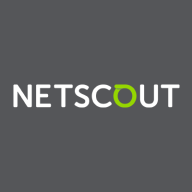

NETSCOUT nGeniusONE and InfluxDB compete in network performance monitoring and time-series data management respectively. NETSCOUT nGeniusONE appears to have the upper hand with its deep network activity visibility, while InfluxDB stands out for its time-series capabilities and flexibility.
Features: NETSCOUT nGeniusONE focuses on packet-level analysis, providing insights through real-time communication monitoring and application traffic analysis. It supports NetFlow and packet inspections, allowing users to perform detailed traffic analysis and troubleshooting. InfluxDB specializes in time-series data management, supporting robust data aggregation and integration with monitoring tools like Grafana. Its lightweight architecture efficiently handles heavy workloads though it lacks NETSCOUT's network-specific features.
Room for Improvement: NETSCOUT nGeniusONE needs improvements in usability, GUI refinement, and virtual environment support. Stability issues post-updates and a streamlined product integration are also noted. InfluxDB could enhance high-cardinality data handling and user interface intuitiveness. Better clustering features in the community version and integration capabilities with other platforms are desired by users.
Ease of Deployment and Customer Service: NETSCOUT nGeniusONE mainly supports on-premises deployment with a competent support system, though requiring resources due to complexity. It offers hybrid and private cloud options but leans towards on-premises setups. InfluxDB provides flexible deployment across public and hybrid clouds. Both have praised support teams; however, NETSCOUT offers more personalized support, while InfluxDB faces resource constraints in handling support tickets.
Pricing and ROI: NETSCOUT nGeniusONE's extensive feature set often comes with high pricing, potentially leading to perceptions of overpayment. Its licensing is seen as competitive for enterprises, but cost remains a barrier. InfluxDB offers an open-source version with recently increased costs for scalable options, viewed as expensive. Despite this, InfluxDB offers ROI through reduced troubleshooting times and flexibility, making it cost-effective for enterprises focused on efficiency.
| Product | Market Share (%) |
|---|---|
| NETSCOUT nGeniusONE | 1.5% |
| InfluxDB | 0.4% |
| Other | 98.1% |


| Company Size | Count |
|---|---|
| Small Business | 4 |
| Midsize Enterprise | 3 |
| Large Enterprise | 6 |
| Company Size | Count |
|---|---|
| Small Business | 14 |
| Midsize Enterprise | 3 |
| Large Enterprise | 37 |
InfluxDB is open-source software that helps developers and enterprises alike to collect, store, process, and visualize time series data and to build next-generation applications. InfluxDB provides monitoring and insight on IoT, application, system, container, and infrastructure quickly and easily without complexities or compromises in scale, speed, or productivity.
InfluxDB has become a popular insight system for unified metrics and events enabling the most demanding SLAs. InfluxDB is used in just about every type of industry across a wide range of use cases, including network monitoring, IoT monitoring, industrial IoT, and infrastructure and application monitoring.
InfluxDB offers its users:
InfluxDB Benefits
There are several benefits to using InfluxDB . Some of the biggest advantages the solution offers include:
Reviews from Real Users
InfluxDB stands out among its competitors for a number of reasons. Two major ones are its flexible integration options and its data aggregation feature.
Shalauddin Ahamad S., a software engineer at a tech services company, notes, “The most valuable features are aggregating the data and the integration with Grafana for monitoring.”
We monitor all Network Monitoring Software reviews to prevent fraudulent reviews and keep review quality high. We do not post reviews by company employees or direct competitors. We validate each review for authenticity via cross-reference with LinkedIn, and personal follow-up with the reviewer when necessary.